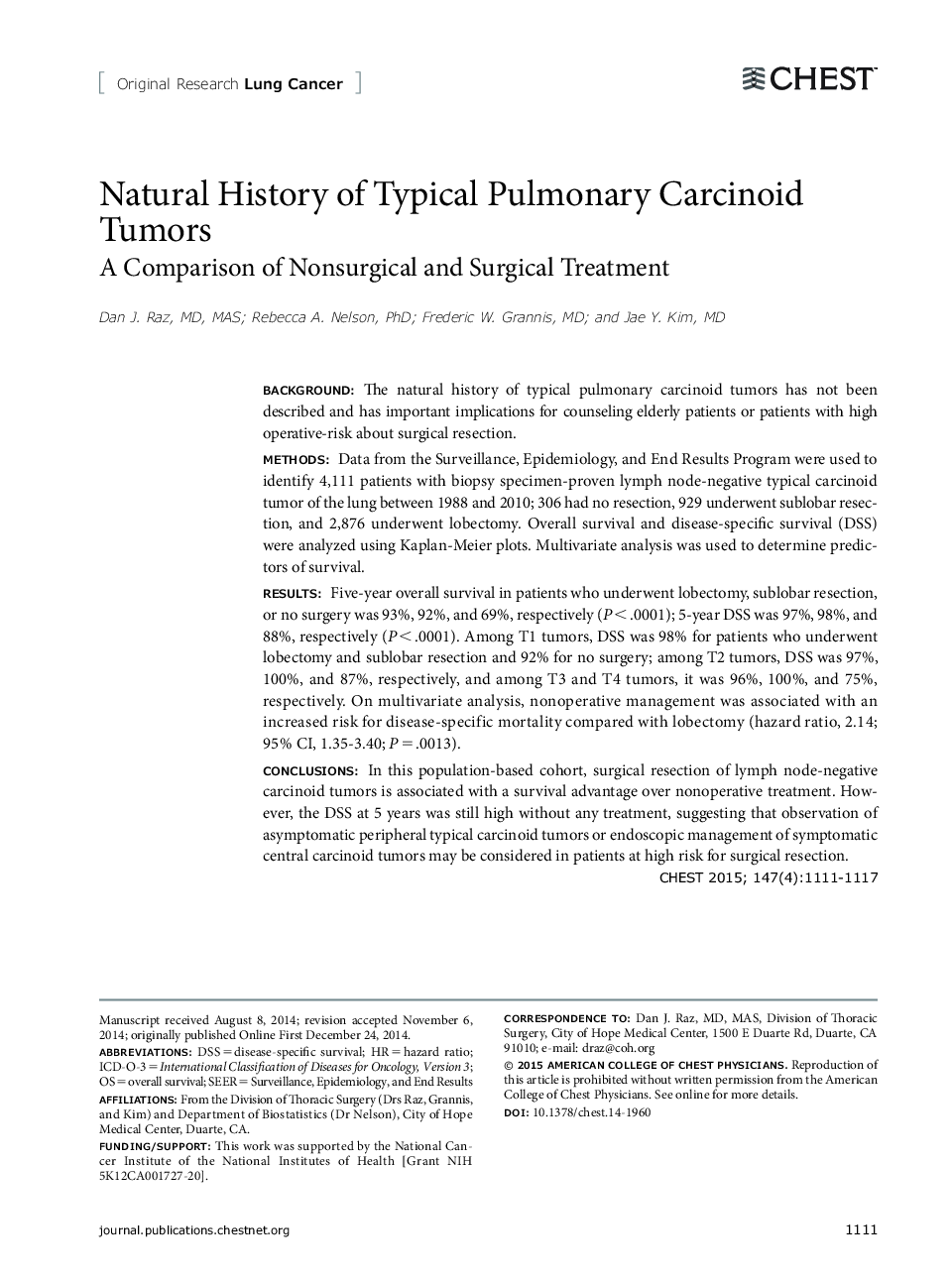| Article ID | Journal | Published Year | Pages | File Type |
|---|---|---|---|---|
| 2900145 | Chest | 2015 | 7 Pages |
BACKGROUND:The natural history of typical pulmonary carcinoid tumors has not been described and has important implications for counseling elderly patients or patients with high operative-risk about surgical resection.METHODS: Data from the Surveillance, Epidemiology, and End Results Program were used to identify 4,111 patients with biopsy specimen-proven lymph node-negative typical carcinoid tumor of the lung between 1988 and 2010; 306 had no resection, 929 underwent sublobar resection, and 2,876 underwent lobectomy. Overall survival and disease-specific survival (DSS) were analyzed using Kaplan-Meier plots. Multivariate analysis was used to determine predictors of survival.RESULTS: Five-year overall survival in patients who underwent lobectomy, sublobar resection, or no surgery was 93%, 92%, and 69%, respectively (P<.0001); 5-year DSS was 97%, 98%, and 88%, respectively (P<.0001). Among T1 tumors, DSS was 98% for patients who underwent lobectomy and sublobar resection and 92% for no surgery; among T2 tumors, DSS was 97%, 100%, and 87%, respectively, and among T3 and T4 tumors, it was 96%, 100%, and 75%, respectively. On multivariate analysis, nonoperative management was associated with an increased risk for disease-specific mortality compared with lobectomy (hazard ratio, 2.14; 95% CI, 1.35-3.40;P=.0013).CONCLUSIONS: In this population-based cohort, surgical resection of lymph node-negative carcinoid tumors is associated with a survival advantage over nonoperative treatment. However, the DSS at 5 years was still high without any treatment, suggesting that observation of asymptomatic peripheral typical carcinoid tumors or endoscopic management of symptomatic central carcinoid tumors may be considered in patients at high risk for surgical resection.
